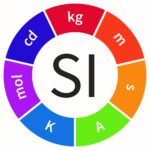Where does your medical lab get stuck with NATA and ISO 15189?
written by Maree Stuart
It’s now been 6 months since NATA commenced assessments against the new edition of ISO 15189. Time flies when you’re having fun! 🙂
In this article, we’ll explore some of the areas Medical Labs get stuck.
1. Management review for ISO 15189 labs
We’ve written previously about management reviews so it’s worth revisiting this article to be sure you’re covering everything you need to.
While section 8.9 covers management reviews in general, clause 8.9.2 contains a list of information. It’s this list of 10 items that you must cover as part of the management review. The items in clause 8.9.3 are not additional items you need to cover; they are about the output and content of your records of the management review process.
Be creative when it comes to ways of presenting the materials covered by the inputs. Despite the significant amount of time many people spend in meetings, you can make the material engaging for everyone. Find out how the people in your management team like to take in information. Are they numbers, letters, or pictures people?
2. Risk management
 There’s now an increased emphasis on risk management. That means that there are fewer prescriptions in the requirements. So labs now have a bit more flexibility in how they approach addressing the requirements.
There’s now an increased emphasis on risk management. That means that there are fewer prescriptions in the requirements. So labs now have a bit more flexibility in how they approach addressing the requirements.
If your systems have been running along nicely and serve your lab’s needs well, then you don’t have to change them. But you do need to think about them with risk (and opportunity) goggles on.
The truth is, that not many people understand the benefits of doing risk management well. So it’s often something that is either an afterthought or is totally over the top for the lab. Our 5 tips to risk management success might be just the thing you need!
3. POCT
These requirements were previously in ISO 22870 and are now included as a normative appendix. It’s important to note that it does not include patient self-testing. However, it does cover all testing that’s done at a patient’s bedside by laboratory staff, doctors, and nurses.
 Governance arrangements for POCT are something medical labs struggle with, especially in a large hospital setting. People can be precious about their patch. If that’s the case, then consider the culture and how this can be tweaked.
Governance arrangements for POCT are something medical labs struggle with, especially in a large hospital setting. People can be precious about their patch. If that’s the case, then consider the culture and how this can be tweaked.
Service agreements with the people performing POCT must clearly define responsibilities and authorities. These details might already be included in position descriptions. A smart way to manage this is to include a general reference to those position descriptions in the agreements.
4. Impartiality
These new requirements are an evolution of the requirements for ethical conduct.
ISO 15189 asks medical labs to do several things:
- Undertake lab activities impartially
- Structure and manage the lab to safeguard impartiality
- Not allow commercial, financial, and other pressures to compromise impartiality
- Monitor, identify, and eliminate or minimise threats to impartiality.
So here’s what you really need to do:
- Set up your lab to minimise the possibility of conflict when people have to make those ‘irky’ decisions. Don’t have the best friend of the patient decide on whether a result can be released for that patient. But I get it; sometimes that’s not possible, especially in small labs. So….
- Establish a review process. Transfer the decisions of approval or acceptance to another person in the organisation if at all possible. The chance of two people getting the decision wrong is smaller than if just one person makes these decisions. Lab QC and review of requests, contracts, and reports are the perfect tools for this.
- Get a clear idea of the people in your lab. Understand the relationships that exist with others inside and outside of the lab. Consider governance relationships too. If you don’t know, ask, but don’t make it an interrogation. Perhaps a questionnaire can help. Remember to explain the reasons why you’re asking these questions. Find more tips in our previous article on How to ask good questions.
- Run the relationships through your risk management system to determine if there are any significant risks above your risk threshold. If there are, put things in place to either eliminate or mitigate these risks. Make sure you can demonstrate how you dealt with these risks to impartiality to an auditor.
- Lastly, think about the culture of your lab. Is it one where anything goes? Is it one where people feel able to disclose that feeling in the pit of their stomach when they feel uncomfortable? The latter, as opposed to the former, is what you should be aiming for. What can you do, as a lab manager or staff member, to encourage the right kind of culture? Can you demonstrate your organisation’s values in your everyday work? (Do you even know what these values are?) Can you use things like the quality policy, structure, and content of any management and staff meetings to drive a culture where you can safeguard impartiality?
If you can’t answer these questions to your satisfaction, then perhaps there is more work to do in the culture arena.
5. Confidentiality
 There have always been requirements for confidentiality. But there is a new twist on the requirements in ISO 15189:2022. They now cover not only confidentiality but also the privacy of patient information.
There have always been requirements for confidentiality. But there is a new twist on the requirements in ISO 15189:2022. They now cover not only confidentiality but also the privacy of patient information.
Ensure that the privacy policy for your organisation aligns with the Australian Privacy Principles and the Guide to Health Privacy.
Medical labs now need to have “legally enforceable agreements” to maintain confidentiality.
TIP: Make sure you review your employment contracts and any terms and conditions with suppliers, patients, and referrers to check if this is covered. Our friends at Lab Law can help!
6. A Patient-Centric Approach
The well-being, safety, and rights of patients now have a higher status in ISO 15189. This reflects how many other management systems for healthcare service organisations have moved to embrace a key foundation of quality: the focus on the needs of the customer.
We’ve written previously on what it takes to have a good customer focus. Many of the requirements for processes within the Medical Lab make a lot of good sense and are not rocket science.
Having said that, labs will need to demonstrate how they have met this element of ISO 15189. That includes a review of the Quality Policy to ensure it considers this elevated focus on meeting the needs of customers and laboratory users.
7. Personnel
These requirements now include processes for authorisation of particular lab activities:
- Selection, development, modification, verification, and validation of methods
- Review, release, and reporting
- Use of various functionalities in LIMS
Your lab’s records for staff must reflect these specific authorisations. It might mean some extra activities need to be recorded. Review and update how you record the authorities for staff members.
8. Metrological Traceability
 The previous standard required metrological traceability to a reference material or reference procedure of a higher metrological order. The update now reflects the current definition of metrological traceability and encompasses traceability through calibration by a competent lab. This also better reflects the Metrological Traceability policy of NATA.
The previous standard required metrological traceability to a reference material or reference procedure of a higher metrological order. The update now reflects the current definition of metrological traceability and encompasses traceability through calibration by a competent lab. This also better reflects the Metrological Traceability policy of NATA.
We’ve written previously on the topic of traceability and how to meet these requirements. In a nutshell:
- Metrological traceability needs to be to the highest possible level of traceability and SI wherever possible
- That means, if the equipment you’re using has a significant effect on your measurement results, it needs to be calibrated by a competent (ISO/IEC 17025 accredited) laboratory, or by the use of certified reference materials that have been produced by a competent (ISO 17034) reference material producer
- You need to have a program and a procedure in place for equipment calibration.
In reality, not all measurements can meet these requirements and you should identify how your lab meets the traceability requirements. There is more than one way to skin a cat! (Our course Without a Trace- simple steps to measurement traceability on 14 March will definitely help with this conundrum.)
9. Method Selection
There is a new nuance on what constitutes a valid method. Labs now have to ensure the assure the clinical accuracy of the examination and its impact on patient care. That means labs must consider not only what’s cheap and “do-able”, but also the required clinical accuracy and how this decision impacts the patient.
Clinical accuracy is a qualitative approach that describes the clinical outcome of basing a treatment decision on the result of a measurement method being evaluated. It considers issues such as rates of false positives and false negatives, sensitivity, and specificity.
The evaluation of clinical accuracy and impact on the patient is not something all labs have been used to. However, some things can be done and may already be a part of method validation. The question of the impact on patient care is not easily answered. It will likely involve key stakeholders in these decisions such as referrers and the patients. This requirement reflects the Patient-Centric Approach discussed above
We’re here to help
 Working in a lab can sometimes be isolating and you don’t get the chance to talk to peers outside of your workplace. You don’t need to do it all by yourself.
Working in a lab can sometimes be isolating and you don’t get the chance to talk to peers outside of your workplace. You don’t need to do it all by yourself.
If you have a professional network of laboratory people, then use the network to get some ideas.
And sometimes you just need to get some professional help to get the job done efficiently and effectively without the stress. That’s where we can help.
Our two courses focussed on ISO 15189 might be just the thing you need! Our ISO 15189 Update course on Wednesday 6 March gets straight to the changes. If you need to cover the whole standard, NATA, and NPAAC requirements, then our 2-day ISO 15189 Unpacked course on Tuesday 19 and Wednesday 20 March is the one for you!
We can also deliver the courses in-house. Send us an email to info@masmanagementsystems.com.au if you would like to discuss this option.
Of course, you can contact us if you need help with getting your system up to standard.
You can also contact Maree on 0411 540 709 for an obligation-free confidential discussion.
Download the article Where does your medical lab get stuck with NATA and ISO 15189?
Remember, you don’t have to do this alone!







